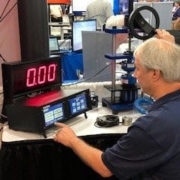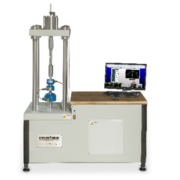Interface Load Cell Indicators 101
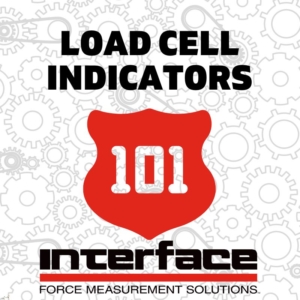 At Interface, our claim to fame is that we offer the most accurate and reliable force measurement devices on the market, from load cells to torque transducers and everything in-between. However, no test is complete without the system used to gather the data to evaluate performance results. That’s why we provide a wide variety of instrumentation solutions that include signal conditioners, output modules, high speed data loggers, portable load cell indicators, and weight indicators to complete any testing system.
At Interface, our claim to fame is that we offer the most accurate and reliable force measurement devices on the market, from load cells to torque transducers and everything in-between. However, no test is complete without the system used to gather the data to evaluate performance results. That’s why we provide a wide variety of instrumentation solutions that include signal conditioners, output modules, high speed data loggers, portable load cell indicators, and weight indicators to complete any testing system.
Among the Interface instrumentation products, the most frequently purchased with a force measurement devices are our load cell indicators in various models including handheld, digital, wireless, multichannel, programmable, output modules, analog and bidirectional.
What is a load cell Indicator?
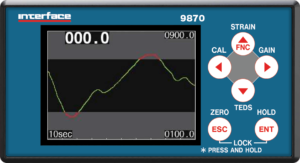 A load cell indicator is a high-accuracy device connected to the output of a load cell to amplify and display the value of the measured load force and weight. Load cell indicators are often needed where the force, load, or weight measurement needs to be visually displayed for the user and displaying the results on a PC is not feasible or desired in the testing environment. For example, testing in the field or confined spaces can make it impossible to connect directly to a PC. In these situations, indicators are used to quickly review and capture force data in real-time.
A load cell indicator is a high-accuracy device connected to the output of a load cell to amplify and display the value of the measured load force and weight. Load cell indicators are often needed where the force, load, or weight measurement needs to be visually displayed for the user and displaying the results on a PC is not feasible or desired in the testing environment. For example, testing in the field or confined spaces can make it impossible to connect directly to a PC. In these situations, indicators are used to quickly review and capture force data in real-time.
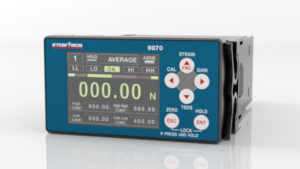 A few key benefits of load cell indicators include that they provide stable excitation voltage and converts force measurement sensor signals to a digital display. Commonly available features include analog or digital output, selectable digital filtering, peak and valley monitoring and set-point outputs. Additionally, each load cell indicator can be used to connect to four (or more) digital load cells and can display individual readings or the sum of all connected load cells.
A few key benefits of load cell indicators include that they provide stable excitation voltage and converts force measurement sensor signals to a digital display. Commonly available features include analog or digital output, selectable digital filtering, peak and valley monitoring and set-point outputs. Additionally, each load cell indicator can be used to connect to four (or more) digital load cells and can display individual readings or the sum of all connected load cells.
Need a load cell indicator?
Interface offers a wide variety of load cell indicators in multiple configurations. Interface indicators come in single to multi-channel weight transmitters and can be found in handheld and portable designs. Things to consider when selecting an indicator are internal sample rate and update rate of the output. A few of our most popular indicators include:
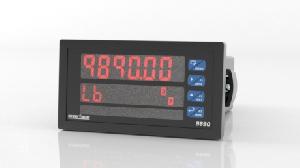 9890 Strain Gage, Load Cell, & mV/V Indicator
9890 Strain Gage, Load Cell, & mV/V Indicator
Model 9890 is a powerful multipurpose digital load cell meter ideal for weight and force measurement applications. With a max current of 350 mA at 10 V, it can support up to 12 load cells making it perfect for multipoint weight measurement purposes. The dual-scale capability allows for displays in two different units of measure. See a demonstration video here.
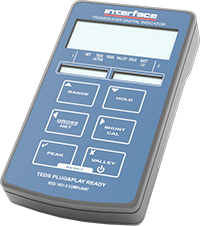 9320 Battery Powered Portable Load Cell Indicator
9320 Battery Powered Portable Load Cell Indicator
Model 9320 is a bipolar 7-digit handheld meter featuring two independently scalable ranges, peak and valley monitoring, display hold, mV/V calibration, and a power save feature. Typical battery life exceeds 45 hours of continuous use and 450 in low power mode. IEEE1451.4 TEDS Plug and Play compliant.
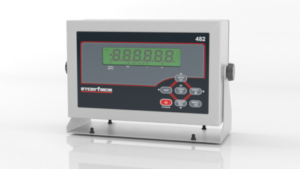 482 Battery Powered Bidirectional Weight Indicator
482 Battery Powered Bidirectional Weight Indicator
Model 482 is battery powered, bidirectional, and comes in a NEMA 4X stainless enclosure. Standard options include 523,000 internal counts, 0.8-inch LCD 6-digit display and a measurement rate that goes up to 40 Hz. Available options include analog and relay outputs.
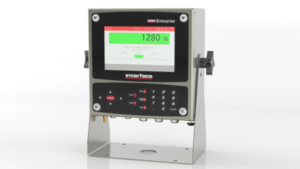 1280 Programmable Weight Indicator and Controller
1280 Programmable Weight Indicator and Controller
The Interface 1280 Series programmable digital weight indicator with color touchscreen, web server view and multiple protocol types delivers uncompromising speed for today’s operations and expansive options for tomorrow’s requirements.
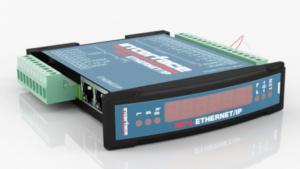 INF4-Ethernet IP Weight Transmitter and Indicator
INF4-Ethernet IP Weight Transmitter and Indicator
The Interface INF4-Ethernet IP weight transmitter and indicator has a six-digit red LED display (8 mm height), space-saving compact design, four buttons for the system calibration, and a six-indicator LED.
See all the indicator options here.
Load Cell Indicator Application Note
The application note below provides an example of the benefit of a load cell indicator in real-world use within the medical industry.
A pharmaceutical tablet producer wanted to monitor the forces applied by the tablet forming machine to understand the relationship between raw material, die set, forming force, and motor-cycle speed. The goal was to improve productivity and efficiency of the tablet forming process while reducing losses, such as cracked tablets or voids, by adding a dimension of feedback that could be used to assign specific press adjustment criteria for given inputs.
An Interface Model WMC Sealed Stainless Steel Mini Load Cell (10K lbf Capacity) was mounted in the section of the downward press bar. The machine was modified to accomplish this. The load cell was then connected to a Model 9320 Portable Load Cell Indicator to collect the needed data.
The indicator was selected as the data collection device because a laptop could have interfered with the test cycle due to space restrictions. The output of the load cell was connected to the 9320 Portable Load Cell Indicator and set aside so that the cable did not interfere with the cycle and no snagging would occur. A cable tie was used to stow aside the cable and to ensure there was enough clearance for the entire cycle.
After analyzing the data, the tablet producer was able to quantify adjustment levels by monitoring which forces produced the most optimal results for a given cycle speed, die set, and raw material. Productivity and efficiency were greatly improved by the enhancement of the data feedback.
To learn more about Interface load cell indicators and for a complete list of products, you can download our instrumentation brochure here. You can also read more about instrumentation options in test and measurement in this post.

